Typically, a traditional house is constructed of brick or stone, has a roof that is designed to keep the rain out of the building, and includes an electrical system. But as millennials enter the home market, the standards are starting to shift, and they are spearheading the development of "wellness-minded" structures.
Although they initially cost slightly more than traditional homes, eco-friendly homes ultimately save you money. It provides quality living space and more benefits for you and the environment.
Beyond the immediate advantages of reduced environmental impact, these homes offer a compelling offer for homeowners: long-term cost savings through eco-friendly ways to save money.
Eco-friendly homes are designed to be as self-sufficient as feasible and have as little impact on the environment as possible.
Sustainable houses use a variety of natural resources, including earth, wind, and light, to minimize their carbon footprint and drastically cut down on the amount of heat and electricity that a homeowner uses.
As we grapple with climate change, resource shortages, and environmental damage, eco-friendly homes are a practical solution. While the upfront costs may seem significant, the "eco-friendly ways to save money" offers that can lead to substantial savings over the property's lifespan.
Eco-friendly homes provide a high-quality living space and help you to save money. An environmentally friendly structure can reduce the amount of water and energy used by 30–50% and 30–70%, respectively. Living in a green building can save money on power and air conditioning.
A well-designed space, for instance, requires less air conditioning. When accounting for these savings, green buildings can be significantly less expensive. More green materials and consultants are currently needed.
Thus, although an eco-friendly home may seem expensive, you shouldn't be worried. Building full-cycle costs increase insignificantly. Eco-friendly insulation and hypo-thermal glass cost 5-8% more. The increased cost can be recouped in 3-5 years due to considerable savings.

Eco-friendly homes aren't limited to those who build themselves. Builders are offering more "eco-friendly" apartments and villas as awareness develops.
Living and working in an eco-friendly environment will gain popularity as customers learn about its benefits.
Eco-friendly buildings are rated on numerous criteria before being green:
Sustainable homes are not a carbon footprint lifestyle statement. Many builders use green ratings and certificates to market their properties.
Not all "green" or "eco-friendly" properties are because they have lawns and gardens; many small and mid-sized builders term their projects eco-friendly.
Checking rating agency certification when buying a "green" home will assist you in spotting a greenwash.
Here are the several eco-friendly ways to save money:
Eco-friendly homes provide quality living space and lower utility bills while saving money over time. In addition, having an environmentally friendly home can help you obtain financing at more favorable interest rates.
These eco-friendly ways to save money encompass features like sustainable building materials, renewable energy sources, and effective insulation, among other eco-friendly cost-saving measures.
More people are adopting sustainability as a lifestyle, not simply as a catchphrase. As homebuyers seek eco-friendly homes, this shift in consciousness is affecting the real estate market.
In today's market, marketing eco-friendly homes requires knowledge. In this blog post, we will talk about sustainable home living, eco-friendly housing amenities, and how real estate agents may market and sell eco-friendly homes effectively.
The trend toward sustainable home living has significantly increased in recent years. For instance, homebuyers consider a property's ecological footprint, location, and visual appeal. Growing market segments now prioritize eco-friendly features, decreased waste, and energy efficiency. The needs of environmentally concerned purchasers are changing, and real estate brokers need to understand this and modify their approaches accordingly.
Understanding a home's eco-friendly features is crucial when marketing it. This knowledge allows real estate agents to communicate these features' benefits to potential buyers effectively.
Essential components include:
ENERGY STAR and LEED certifications are two examples of certifications that can provide concrete validation of a property's commitment to social and environmental responsibility.
The real estate industry has recently seen green certifications emerge as powerful marketing tools. Real estate agents need to be aware of the significance of several certifications. A property's marketability can be improved by understanding the prerequisites and benefits of any recognized certification, such as LEED or ENERGY STAR. Highlighting these certifications in marketing materials and property listings in a competitive real estate market may attract environmentally conscious buyers and set a house apart.

Eco-friendly homes for sale require appealing marketing. Listings of properties are needed to promote environmentally friendly characteristics and to include images of high quality that are conscious of the environment.
Producing specific marketing materials highlighting the advantages of the house's environmental attributes, such as reduced energy bills and small carbon emissions, may also be an effective way to attract buyers worried about the environment's future.
Many purchasers need to fully understand the long-term benefits of environmentally friendly features. To fulfill their educational responsibilities, real estate brokers should explain how features such as solar panels, energy-efficient windows, and smart home technologies contribute to the preservation of the environment and result in cost savings over time. By providing information about decreased utility bills and their favorable environmental impact, it is possible to demonstrate attractive selling factors.
Real estate agents who want to specialize in environmentally friendly properties should make a deliberate effort to cultivate relationships with businesses that create and develop sustainable structures. Establishing these relationships demonstrates a dedication to environmentally responsible behaviors and allows access to a consistent supply of ecologically friendly dwellings. Participating in networking events within the community of sustainable builders can provide access to one-of-a-kind listings and opportunities for collaboration.
Sustainable home living is changing the real estate industry and real estate agents, home sellers, and home buyers must learn to adapt.
To effectively sell eco-friendly homes, agents must know green features, certifications, marketing, buyer education, and strategic collaborations with sustainable builders. They must also know how to prioritize sustainability to meet market needs and promote a greener real estate sector.
Community gardens and real estate are integrating beyond greenery in metropolitan areas. Adding green spaces to real estate developments improves aesthetics and benefits people and the community as cities grow.
One crucial aspect to consider is the environmental benefits offered by community gardens. Are community gardens good for the environment? In this post, we will help you understand what community gardens do in the environment.
"Are community gardens good for the environment?" -- that's one of the frequently asked questions about community gardens. To answer this, you must first understand what a community garden is.
A community garden is a piece of land cultivated by a group of people. Vegetables and flowers are usually grown here individually or collectively. As a result, it helps improve physical and mental health and nutrition in the community.
A green revolution is quietly growing in urban settings with skyscrapers and busy streets. Growing concrete jungles requires additional green places. Amid urban chaos, communal gardens promote sustainability, community solidarity, and property values.
As green oases in urban settings, community gardens profoundly affect mental health, encourage sustainability through operations, and are increasingly valued as eco-amenities by real estate developers.
Community gardens bring nostalgia and nature to city dwellers, providing a refuge from city life. The emotional allure of these natural areas goes beyond aesthetics, affecting well-being and belonging.
Community gardens are essential for promoting mental and emotional health, creating a sense of community by bringing people into contact with nature in urban areas, and encouraging personal growth narratives through shared gardening experiences.
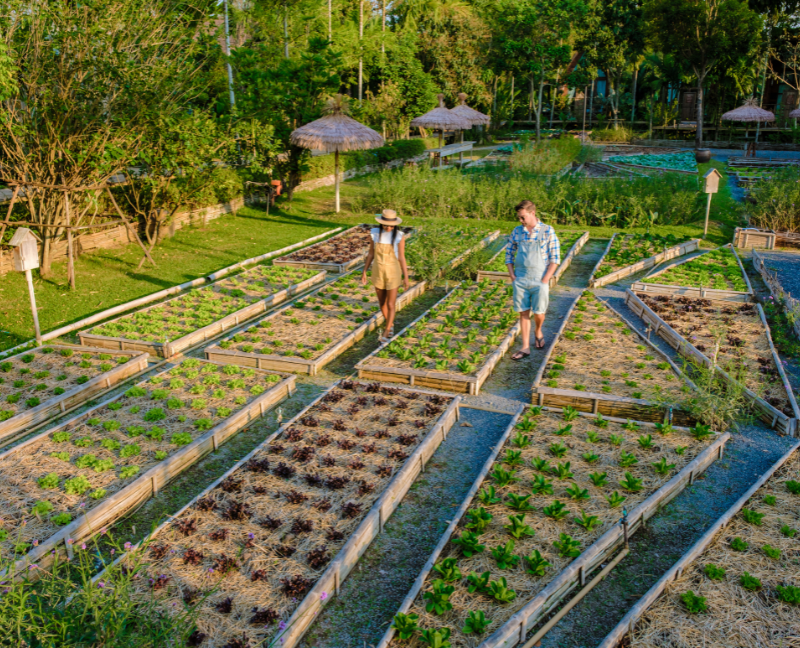
Community gardens increase real estate values and resident well-being. Developers realize that community gardens can boost property prices and increasingly embrace green facilities.
Growing community gardens are being used as selling factors in marketing efforts, and the demand for homes close to green areas is a sign of beneficial effects on property values, in line with real estate trends emphasizing sustainability and green living.
Community gardens serve as a platform for sustainable practices and allow locals to cultivate their food. These green areas become centers of environmentally conscious activities that improve the environment and teach the local population sustainable living practices, such as composting and rainwater collection.
Community gardens are essential to urban farming and self-sufficiency. They promote sustainability in urban environments through educational initiatives, rainwater gathering, composting, waste reduction, and water-saving techniques.
Keeping real estate and green spaces in balance is tricky as demand rises. Collaborative urban planning efforts, encouraging developers to include green amenities, and encouraging community involvement in decision-making processes are all necessary to balance the requirements of inhabitants and the demands of real estate development.
Community gardens in real estate serve emotional, social, and environmental demands in the ever-changing metropolitan setting. Green spaces and real estate create value in urban environments and a more sustainable and peaceful future.
The effects of community gardens on urban real estate include increased property values, environmental sustainability, and communal well-being. Developers are interested in how community gardens provide value, livability, and resilience to urban surroundings.
As we cross the urban jungle, you may know how these community oases affect property values and quality of life. Solutions must balance concrete with vegetation to preserve urban ecosystems for the next generations.
More and more individuals and business entities are becoming conscious of what's happening in the environment. Part of their effort includes adapting to changes that would support the health of the planet, such as making it more sustainable may surprise homeowners in particular.
Making a house more eco-friendly can lower monthly utility costs and increase its market value. Nearly 85% of American homeowners say they would someday like to live in a greener home, according to Realtor.com. Therefore, a home may have a larger return on investment for any implemented eco-friendly project if it caters to individuals included in this statistic.
Fortunately, many home upgrades have a significant environmental impact with little homeowner effort. Some of these include:
Many people lower their water expenses by replacing toilets and faucets with low-flow models that work without waste.
Other homeowners who have more time may install new flooring. Due to their low waste and environmental impact, reclaimed wood and bamboo are popular.
While some bathroom improvements may not enhance sustainability, many clever materials reduce waste. Recycling trash, buying used furniture, and using low-volatile organic compound paint is eco-friendly without losing quality.
While planning a DIY upgrade, assess the ability and materials needed to decide if professional help is required. Performing these undertakings alone can be dangerous and time-consuming. If in doubt, consult a pro for an excellent job.
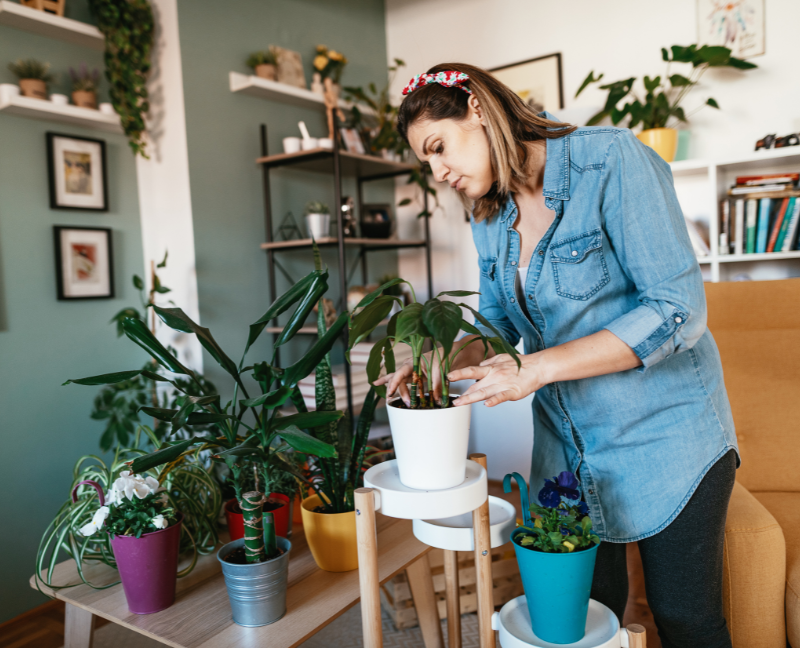
What's outside matters just as much as what's inside when creating eco-friendly homes.
Lighting an outdoor space with inefficient light is a lost battle; however, solar-paneled pathway lights can recycle energy from sunlight. These fixtures can also bring ethereality to a garden while conserving money.
Sustainable outdoor furniture is also essential. Choose lightly used items from internet markets or thrift stores when in doubt. Certified wood and recycled plastic outdoor furniture are also available.
Any outdoor space can also use solar panels for higher expenditures. The initial installation may cost a couple of thousand dollars, but the utility expenses will drop afterward. Renewable energy, like solar panels, gets most of its power from the sun and stores it for a rainy day. Residents can pay for these panels monthly to own them and enjoy sustainable energy for life.
Composting is another option. Put organic materials and food waste here, which will break down into rich soil for cultivation. It lessens the need for artificial fertilizers and boosts curb attractiveness.
Home renovations like switching incandescent lighting with LEDs, which last longer, consume less energy, and cost less, can help lower electricity bills. More savings come from energy-efficient appliances. Over time, washing machines, dryers, and refrigerators have become more energy-efficient.
Older models are notoriously energy-wasting; therefore, decreasing utility bills through smart appliances will help offset higher initial costs. Moreover, checking energy leaks from poorly sealed windows, especially for heating and cooling helps. Older homes with excessive leakage should have their windows sealed or replaced.
Do you have more tips on how to save energy or turn your home into a sustainable one? Feel free to drop them in the comments!
Green roofs provide both a natural and symbolic breath of fresh air in the busy concrete jungles that are today's cities. These inventive installations improve urban landscapes and the environment by decreasing heat, stormwater runoff, and air pollution.
This post will discuss how green roofs work, enabling city people to develop thriving green areas on top of their structures. The below ideas will show you how to grow beautiful green roofs and how they benefit the environment and community, whether you're a seasoned gardener or a beginner.
Plant-filled green roofs are also called living roofs. They are environmentally friendly and encourage sustainable development. Creating a green roof requires a waterproofing membrane, root barrier, drainage layer, growing medium, and vegetation. Green roofs' main goals are sustainable energy, stormwater management, and a healthy environment.
Green roof vegetation and substrate absorb precipitation, lowering pressure on drainage systems and flooding danger. As insulation, green roofs reduce heating and cooling needs, minimizing building energy consumption. They improve air quality and mitigate climate change by catching pollutants and carbon dioxide.
Meanwhile, rooftop gardens extend green roofs into outdoor living spaces for cultivation, recreation, and community participation. Beyond ecological benefits, rooftop gardens emphasize social and economic benefits.
Rooftop gardens are communal and entertainment settings. Sitting places, strolling trails, and playgrounds can be added to these gardens to create relaxing, social, and community spaces. It can also be a place where residents relax and connect by providing a break from city life.
Urban agriculture should be done outside to encourage sustainable food production. On your rooftop patio, grow fruits, veggies, and herbs in raised beds or containers. Use composting to recycle organic waste and feed plants.
Sustainable rooftop greenhouses mix agriculture and design. These unique structures allow rooftop farming of fresh produce. Sustainable design improves rooftop greenhouses' environmental performance. Install rainwater collecting, solar panels, and composting facilities to lessen your roof decking's ecological impact.
Hang baskets, pots, and cascading vines from pergolas or trellises. These designs produce a green curtain effect and provide visual appeal to the rooftop deck or patio, making it a beautiful green retreat. Rooftop greenhouses improve energy efficiency, air quality, and food sustainability using vertical space and modern growing methods.
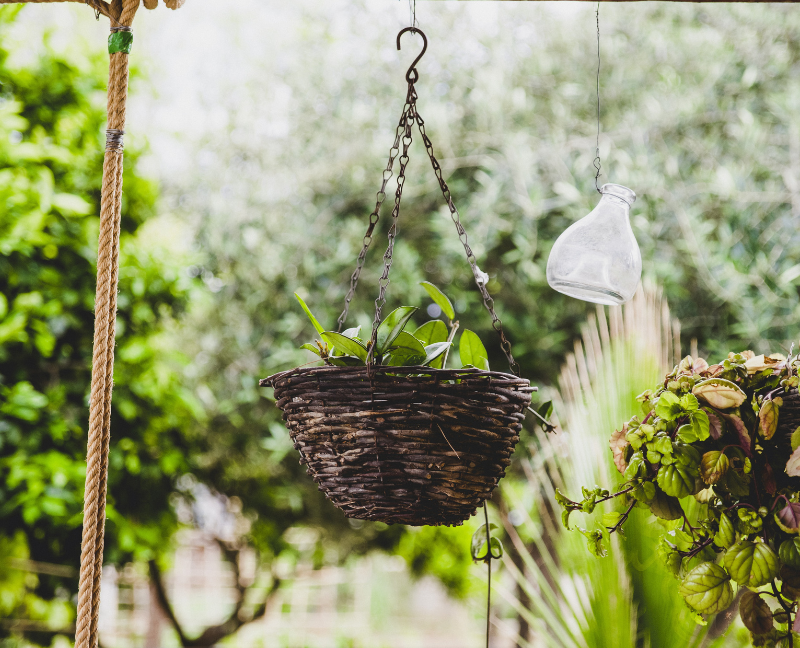
Create rooftop greenhouses with giant planters or raised beds. Easy maintenance, plant selection, and transportation are possible with this strategy. It works for studio apartment rooftop terraces with weight limits or limited space.
Plant local herbs and medicinal plants on your rooftop patio. Put culinary, medicinal, and fragrant herbs in separate sections. Practice and wellness are combined in this design.
Native plants thrive in local climates, require less care, and shelter wildlife. Ecological balance and indigenous plant conservation are achieved using this method.
Make rooftop gardens into sustainable and learning areas. Signage, information boards, and interactive displays could explain rooftop gardens, native plants, and other eco-friendly techniques.
Make the rooftop terrace a relaxing urban home. Create a soothing atmosphere with fountains or tiny ponds. Plants, trees, and water elements make these gardens a welcome respite from the city. They help preserve urban biodiversity by housing birds, butterflies, and other animals.
Creating a rooftop garden outdoor living space lets you relax, connect with nature, and enjoy the scenery. Select comfortable and sturdy outdoor furniture that matches your style and preferences, offers comfy seats and shade structures, and adds fragrant plants to enhance the sensory experience, illumination, and relaxation. For extra coziness, add plush cushions and pillows.
A rooftop terrace seamlessly connects indoor and outdoor living spaces. Residents may rest, party, and enjoy city views in its adaptable outdoor living and dining area. Rooftop terraces offer a retreat from the city with lounge seats, dining areas, and hot tubs. Design your roof decks for inspiration, socializing, and outdoor activities. It can create relaxing lounges or dining areas beneath covered pergolas.
Conclusion
Rooftop makeovers serve as an inspiration for creative design concepts and upcoming advancements in the building sector. Green areas are being incorporated into building designs by architects and urban planners, who are putting sustainability and the welfare of the community first.
In the ever-changing real estate market, homeowners often end up with lots of questions than before, such as "How can I sell my home faster?"
If you're one of these home sellers or you're just curious about the best ways to put your home on the market, then you're in the right place!
In this post, we will cover the best ways to sell your home to maximize your return on investment, whether you're moving for work, downsizing, or simply needing a change.
Just how hard is it to sell a home?
All you have to do is tell everyone you know that you're selling your property and/or take photos and videos and post it online.
If only it's that easy. Selling a home is more than just putting your house on social media or telling your family and friends about it. It's a long excruciating process that may need a few boosts or guidance to be executed quickly and properly.
Here are some things to do to sell your home:
An agent's market knowledge helps you price your property competitively. They ensure your home is priced correctly in the market using their hyperlocal experience. A good agent brings in stagers and photographers to make your home appear its best in online advertising and open houses.
A real estate agent's services provide the following advantages:
The possible disadvantages of having a real estate agent are:
As the name implies, FSBO is a homeowner-driven technique where the property owner acts as a real estate agent. They individually schedule and manage property visits. Homeowners also ensure essential documentation meets local and state requirements.
Advantages of FSBO use include:
Using FSBO may present the following difficulties:

Homeowners can market their houses on internet marketplaces, thanks to real estate digitalization. Buyers and sellers can easily use many popular platforms.
The advantages of utilizing online marketplaces are:
The possible disadvantages of using this are:
Auctions sell properties to the highest bidder after a fast-paced bidding procedure. Online platforms, independent auction houses, and real estate corporations can hold these auctions. Traditionally, bidders attend live auctions at an auction house or property.
Advantages of real estate auctions include:
Using auctions may present the following possible disadvantages:
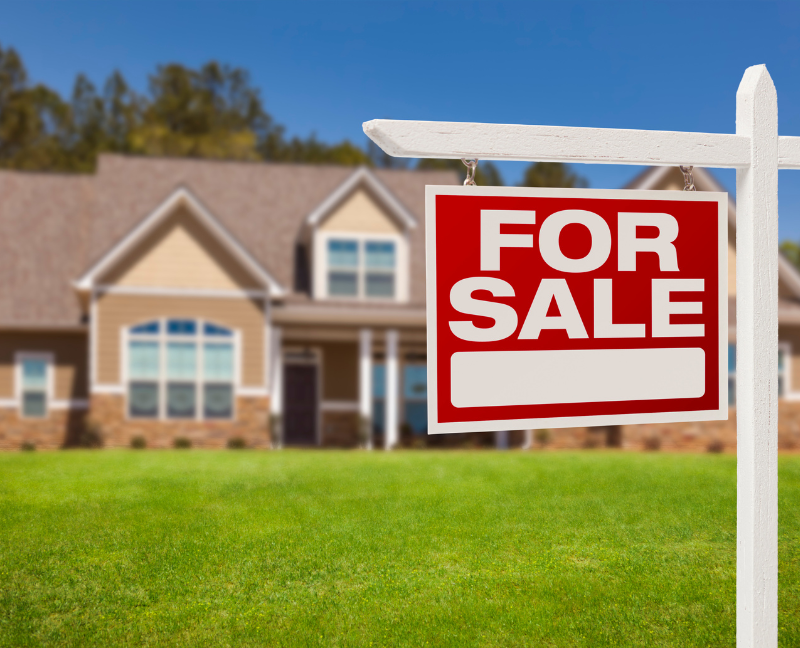
Selling your home can be tricky; luckily, there are many ways how to do it. Here are more tips for selling your home:
Homes are bought outright by cash buyers without mortgages. This unusual strategy appeals to homeowners seeking speed and ease. People, real estate investment corporations, and specialized companies may buy family houses, apartments, and rental properties for their diversified investment portfolios.
Advantages of this method include:
The following potential risks could arise from using this method:
Real estate methods like lease options and rent-to-own benefit buyers and sellers. The agreement's terms and conditions usually differ. Rent-to-own tenants must buy the property or forfeit their rent premiums after renting it for a defined period.
The advantages of rent-to-own and lease options are:
The ret-to-own and lease options may present the following difficulties:

Home Staging
Furniture and decor are arranged to highlight the property's best qualities and appeal to a broad audience during home staging. Removing family images while arranging the home helps buyers visualize themselves there.
The following are some of its advantages:
Virtual Tours
New virtual tours let purchasers tour homes from their screens. These 360-degree 3D digital walkthroughs let customers explore every corner of a house.
The following are some of its advantages:
Conclusion
Selling a home is a significant decision that needs careful planning. All these things to do to sell your home methods will help you if you want to sell your home. It's crucial to realize that no approach works for everyone. Each selling strategy has pros and cons. Those are the best options on how to sell your home but they will rely on your tastes and market knowledge.
Gone are the days when traditional roofing materials included asphalt and concrete tiles; now, there's a new competitor that focuses on using sustainable energy -- solar roofs.
A huge number of homeowners seeking energy efficiency end up choosing solar roofs because of several reasons. For one, it combines innovation and functionality, and two, it helps lower electric bills and carbon footprint.
In this post, we'll dive deeper into how solar roofs work, their pros and cons, and things to consider if you plan to install one in your home.
Like a typical roof, it protects the home and its dwellers against weather-related issues, including rain, wind, and snow. However, it's more than that as it can produce its energy.
PV panels or solar shingles are directly incorporated into the roof to harness sunlight's power—a smooth, appealing, energy-generating roof.
Solar roofs generate electricity using cutting-edge technologies. These roofs use monocrystalline or polycrystalline silicon solar cells in solar panels or tiles.
When sunlight hits these cells, an exciting process happens. Electric current flows from your solar roof's photovoltaic (PV) tiles when sunlight strikes them and is absorbed by solar cells. Your solar inverter receives this direct current (DC) energy and transforms it into alternating current (AC) energy, which powers your house.
AC powers most homes and appliances. An inverter converts DC electricity into AC before usage. Usable electricity can run home appliances or be supplied back into the grid, resulting in electricity bill credits. Solar technology in roofing materials like tiles and shingles lets homeowners preserve their home's appearance without installing cumbersome solar panels.
Solar roofs benefit both homes and the environment; plus, it's aesthetically appealing. Below are some advantages of solar roofs:
Today's climate-conscious world emphasizes the importance of renewable energy sources. Installing a solar roof benefits the environment in more ways than one:
Solar roofs seem to make a lot of financial sense, in addition to the obvious benefits they provide to the environment:

The installation of a solar roof allows households to achieve greater energy autonomy:
One of the major drawbacks of solar energy is the high initial costs of the equipment and installation. However, leasing options can lower your initial expenses if money is a concern. Should you decide to purchase, you will have to occupy your house for a certain amount of years until the system becomes self-sufficient. Renters are less suitable for this long-term investment than property owners.
One of the main drawbacks of solar energy has been the brief drop in energy production during inclement weather. However, because of advancements in battery technology, the impact of days with minimal solar energy is decreasing.
Alternatives to outdated solar energy storage technologies, such as lead-acid batteries, are emerging. Higher power at a reduced cost is provided by lithium-ion batteries. Batteries built with nickel have an incredibly long lifespan. New technologies promise large-scale and long-lasting power storage, such as flow batteries.
When it comes to solar roofs, orientation matters. Your roof won't be able to collect enough solar energy if it isn't facing the sun. Flat roofs are typically less effective than roofs that tilt toward the sun.
Solar panel installation is facilitated by roofing materials including metal, tiles, and asphalt shingles. The cost of installation might be higher if your space is constructed of different materials. The capacity of roofs to hold solar panels contributes to their energy-efficient characteristics.
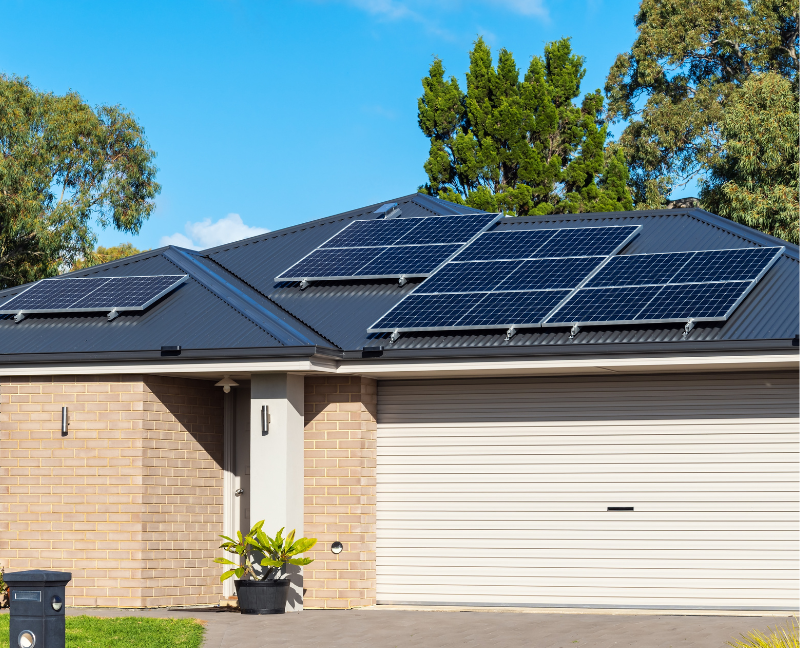
Installing a solar roof benefits the environment and your finances as well. However, to know if a solar roof is worth it for you and your home, you have to consider a few things first:
Before adding solar panels or tiles, check your roof's support. Considering the roof's condition can prevent future issues and prolong the life of your solar system. Normally, it's better for new roofs.
Some roofing materials need to be more suitable for solar installations. If you have a concrete tile roof or a steel roofing tile, visit a roofing and solar firm to understand the installation consequences. Traditional asphalt roofs are usually compatible. The roof design, slope, and orientation also affect solar system effectiveness.
Solar roofs are expensive, so evaluate all costs:
Solar roofs work best when tailored to your home's energy needs:
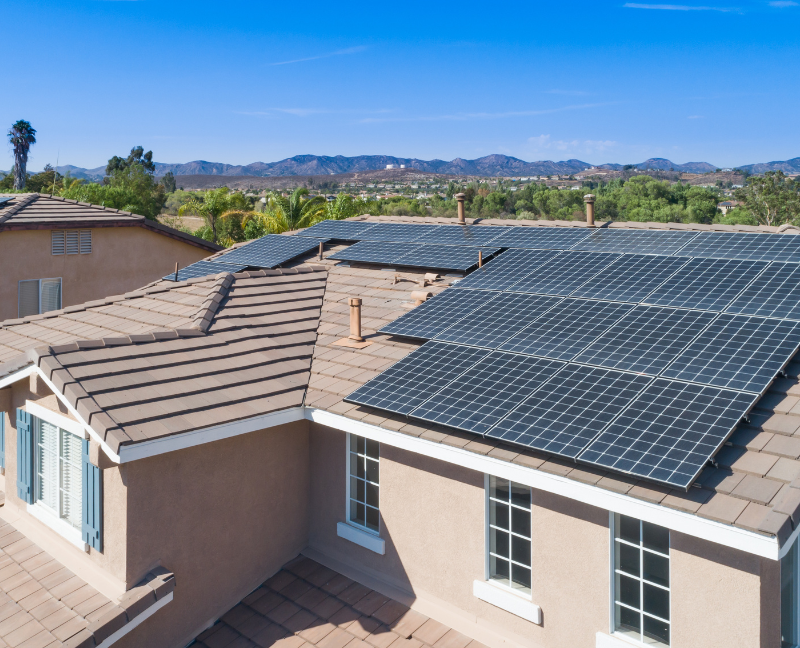
Local laws can differ; therefore, it's essential to know what the rules are where you live:
As with any significant home upgrade, installing a solar roof is just the beginning. To extend the life of your investment, you have to take care of it just like your other assets.
Low-maintenance solar roofing. Basic tasks can optimize system performance:
Knowing your warranty and repair needs can prevent problems:
Solar roofs are more than just eco-friendly—they represent the future of clean energy and sustainable living. The move toward renewable energy sources like solar power is vital to meeting the world's energy needs sustainably.
Have you heard of the term "dry closing" before?
If yes, but you're not certain what it means or if it's your first time hearing it, then you're in the right place.
Dry closing is when all the papers are signed, and payment is sent, but the ownership transfer doesn't happen immediately because of an unfinished business. In simple terms, it's when a buyer and seller agree to close on a house before any money has been handed in.
In this post, we'll discuss what dry closing is about, why it occurs, what makes the seller agree to this as well as other frequently asked questions about it.
A dry closing differs from a "normal" wet closing simply because the seller is paid after the buyer fulfills the mortgage criteria and the closing documents are signed.
Dry closings occur only when the buyer and seller agree on the same thing. When events arise that ordinarily lead to a buyer or seller pulling out of the sale, they are designed to keep the transaction moving forward. Lastly, just a few states allow dry closings.
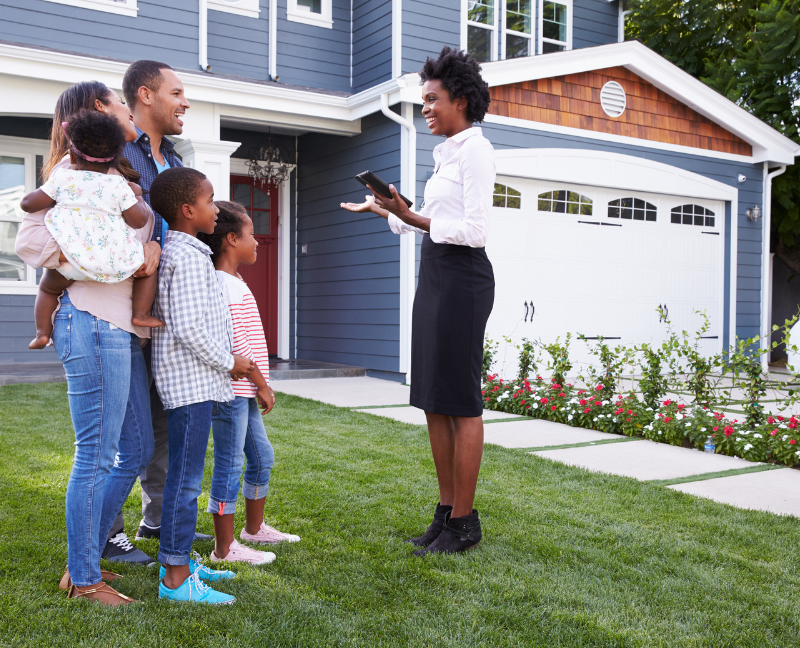
When selling a house, people expect closing payments. Most states mandate a 'wet close' for all real estate transactions.
Every closure should be wet, but the lengthy and challenging process may prevent the buyer from paying on closing day. The parties can wait two or three business days for the earnest cash rather than dissolve and fight over the deal.
The buyer or lender usually causes a dry closing since the buyer's finances to pay for the selling are delayed. This could be due to a payment glitch that takes time for the lender to fix, the buyer needing to meet an outstanding condition to get a mortgage, or the seller having a similar issue with their property that prevents a sale condition from being met.
Dry closings keep deals alive and ensure buyers get houses and sellers get money. Thus, dry closing may be preferable to wet closing, which fails if the seller doesn't obtain their money on closing day.
Dry closings do not necessarily mean the buyer is untrustworthy. Deals sometimes need to be corrected, and funding arrives late. That means it will come so close first and retrieve your money a few days later.
To answer this, you must consider the role of the lender. Overall, they have a huge influence on real estate closing. A buyer seeking a home from a seller rarely has the money to pay. So they borrow money from lenders to be able to purchase the property.
The buyer puts the property as collateral for the loan, so the lender may repossess it and get their money back if things go wrong. Thus, the lender pays the seller, not the buyer. If the lender delays sending the loan to the buyer, a dry closing may be beneficial while the lender resolves its concerns.
While the buyer and lender are typically the source of a dry closing in real estate, the seller may sometimes be the one to force a post-closure funding delay.
After a dry closing, sellers should not relinquish their home's title. Keep the title and key until they have money. In the odd event that finance fails, it can be difficult to reclaim the title from the buyer if the transfer is already completed.
Dry closing is when a buyer and seller agree to close on a house before cash is exchanged, with the seller paid once the buyer meets mortgage requirements and signs closing documents. The seller's credibility is rarely involved in this situation, which usually requires buyer financing delays.
Though it delays seller payment by a few days, a dry closing can keep deals alive and go forward. Providing funds and causing delays are vital to the lender. At a dry closing, sellers should keep ownership until payment is made to avoid financing issues.
The chilly winter months are officially over; now, the real estate industry is getting ready for spring's busiest season. As the days get longer and the weather warmer, many homeowners consider listing their homes for sale in spring as this is the ideal moment to stand out in a highly competitive market.
Buyers are ready to move before summer, the weather is more cooperative, and plants bloom. However, increased competition requires careful planning and preparation to sparkle your property. But don’t worry, we’ll have everything you need in this post.
Here’s a quick list for homeowners to get their homes ready for sale in spring:
Spend time organizing and depersonalizing each space before showcasing the home to potential buyers. A clear, neutral canvas that enables home viewers to see themselves living in the area is encouraged by removing extra furniture, sentimental belongings, and family photos.
Prospective buyers must see a clean home, so spend time deep cleaning carpets, windows, and hard-to-reach locations. Think about hiring experts to guarantee a thorough service for window washing or carpet cleaning jobs.
Take care of minor maintenance or repair issues to keep your home appealing. This involves fixing leaking faucets, damaged tiles, and scuffed walls. Buy these basic repairs upfront to avoid purchasers negotiating a cheaper price.
Make an excellent first impression by caring for the outside of your house. Refresh your property with lawn mowing, bushes pruned, and vibrant flowers added to flower beds and pots. To improve curb appeal, think about repainting your front door and installing new house numbers or a chic mailbox.
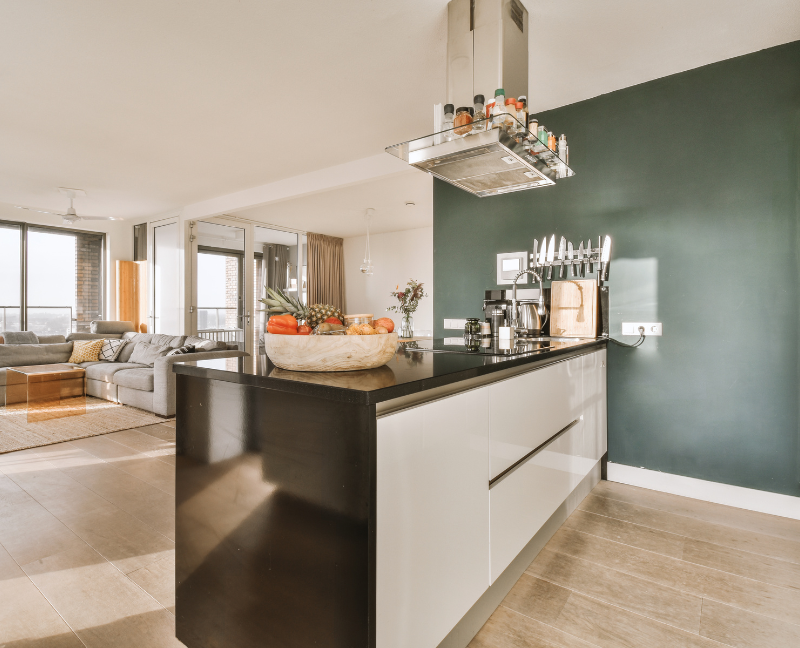
How prospective buyers view your house can be significantly impacted by proper staging. Organize furniture to maximize available space and flow, and accent your home's best characteristics with appropriate decor. Professional staging services may prove advantageous if you need clarification about where to begin.
Showcase whatever spring-themed features your house may have to make the most of the season. Allow natural light to penetrate rooms by opening curtains, arranging potted plants or fresh flowers, and setting up outside living areas to showcase their capacity for hosting.
In the digital era, photo quality is crucial to attracting online customers. Engage an expert photographer to take pictures of your home from the interior and outside to show it off. High-quality photography is essential because these photographs are the first thing purchasers view when browsing listings.
A skilled real estate agent may offer helpful insight into these areas and provide valuable skills in pricing strategies, effective marketing techniques, and astute buyer negotiation.
Careful planning and close attention to detail are necessary when getting your house ready for a spring list for homeowners. These top tips on how to prepare the house for spring can help you attract buyers and sell it in the active spring real estate market.
In Part 1, we’ve shared tips on how to make open houses more inviting, such as using signages, creating shareable videos, putting balloons in mailboxes, and more.
Now, let us dive deeper into the art of attracting buyers during an open house.
If the home you're showing is vacant, virtually staging a few or all rooms will be one of the best open house ideas to inspire buyers to imagine it furnished. If the house has a lot of stuff, colorful purple walls, carpets, or other old-fashioned features, virtual staging might show the owner what it would appear like with a few improvements or a neutral color scheme. Put a photo of the altered area on an easel or display a QR code in a few key rooms to link with a gallery of staged photos online.
One way to not only get attention but keep you in your prospect’s mind is to customize. Attach personalized labels with your contact details and logo to the water or bubbly drink bottles you offer.
Seek out co-branding options with a local restaurant, bakery, or deli. To attract prospective buyers, tiny local shops can display little savory snacks or cupcakes alongside their menus, business cards, or coupons.
Have a coworker, intern, or other person at the open house answer guests' inquiries, ask the proper leading questions, conduct personal guided tours, and watch for particularly interested buyers to follow up with. Get your helper to match up names on the sign-in sheet with interest levels, so you can customize follow-up for promising leads.
The lender can instantly pre-approve prospective purchasers and inform them of the monthly payment amount before they leave the property, allowing the buyer to ascertain their affordability immediately.
Prepare small bags to give with various treats that visitors can take with them. Gift bags are great open-house ideas for promotional products like refrigerator magnets or keychains. Add a packaged cookie from a local bakery and ask nearby shops for samples or coupons.
A raffle is a great way to get visitors to your open house. Think of items like fanny packs, baseball caps, duffel bags, or portable Bluetooth speakers that you can buy in large quantities and mark with your promotional logo. Local businesses may donate a prize if you put their advertising materials in the goodie bags or educational packets. Include a social media and invitation that mentions the raffle.
Listing agents usually welcome other agents' open houses, especially if they're across town. Ask for your open house signs to promote your brand in the community and provide the listing agent an enticing referral fee for every client you secure from the event.
See if two or three local real estate agents want to collaborate on a multiple-house open showing. Plan and advertise the event jointly and create buzz on your social media channels.
Invite local real estate brokers to a private preview. In addition to networking with local industry people, this event can lead to future open house collaboration.
Send them a personalized video follow-up message with their name and an outline of the property's essential features. Messages can be sent after the open house if well-attended, but interested parties should be prioritized.
Reconnect with every individual who was reached. Call them to inquire about their experience, or if they have given you their agent's business card, call the agent to find out what they had to say.

This is one of the most underrated yet effective ways to make an open house more inviting: bake cookies. Instead of buying them, ask the current homeowner if you can use their oven for baking the goods. If you bake late enough, the house will still smell amazing when guests arrive. Just make sure you leave enough time for kitchen cleanup afterward.
A Thank You card can keep the property—and its owner's name and contact information—on a hot prospect's mind. Select a home-themed thank you card or one with a more profound message. You can even provide a photo of the deck view they loved to a Card. Whatever design you choose, write a note and immediately send the card an email or text message.
Executing great open house ideas, such as freshly made cookies and virtual staging, can increase the attraction of your house to potential purchasers. In addition, giving customized follow-ups, partnering with nearby businesses, and offering branded drinks are among the best open house ideas to impress and engage buyers.

8313 W. 10th St
Indianapolis IN 46234
dennis@indyhomepros.com
317-316-8224